Knowing how to make Greek yogurt is a life hack that feeds your family, saves you money, and pats you on the back. Most importantly, homemade Greek yogurt surpasses store-bought yogurts every time in taste, texture, and quality.

Is there anything more satisfying than knowing you can make all the things you used to rely on the grocery stores for?
I’m talking about your weekly staples like sour cream, cottage cheese, ricotta cheese, and sweetened condensed milk.
Snacks like sourdough discard crackers and graham crackers.
Breakfasts like sourdough cinnamon crunch bagels, homemade pop tarts, and creamy Greek yogurt.
More delicious, more nutritious, and what an accomplishment.
Homemade Greek yogurt is made weekly here. It’s a high-protein, customizable breakfast or snack that is easy to make and doesn’t require any fancy tools.
It’s the simplest way to take a lot of milk and a little bit of cultured yogurt and turn it into a big batch of Greek yogurt that will last you all week.
Use it in smoothies, baking, as a substitute for sour cream, or as a mid-afternoon snack for hungry kiddos.
I serve it at breakfast with either a drizzle of maple syrup or honey, a generous spoonful of strawberry jam, or a serving of sourdough granola and fresh fruit.
It’s a quick and filling breakfast that everyone enjoys!
Why You’ll Love This Recipe
Simple and fresh – It’s an easy process that turns your choice of milk into a protein-rich yogurt that you get to enjoy all week. When you control the quality of the ingredients, you get to have the freshest, best yogurt available without preservatives or additives.
Economical – Homemade yogurt is also cost-effective. For the price of a gallon of milk and a bit of yogurt to start, you’ll have better quality and a larger quantity of yogurt.
Delicious – With whole milk and cultured yogurt, the result is thick, creamy, and deliciously sour. With a gentle straining process, you won’t run into that dry, chalky texture you find in some Greek yogurts.
Ingredients
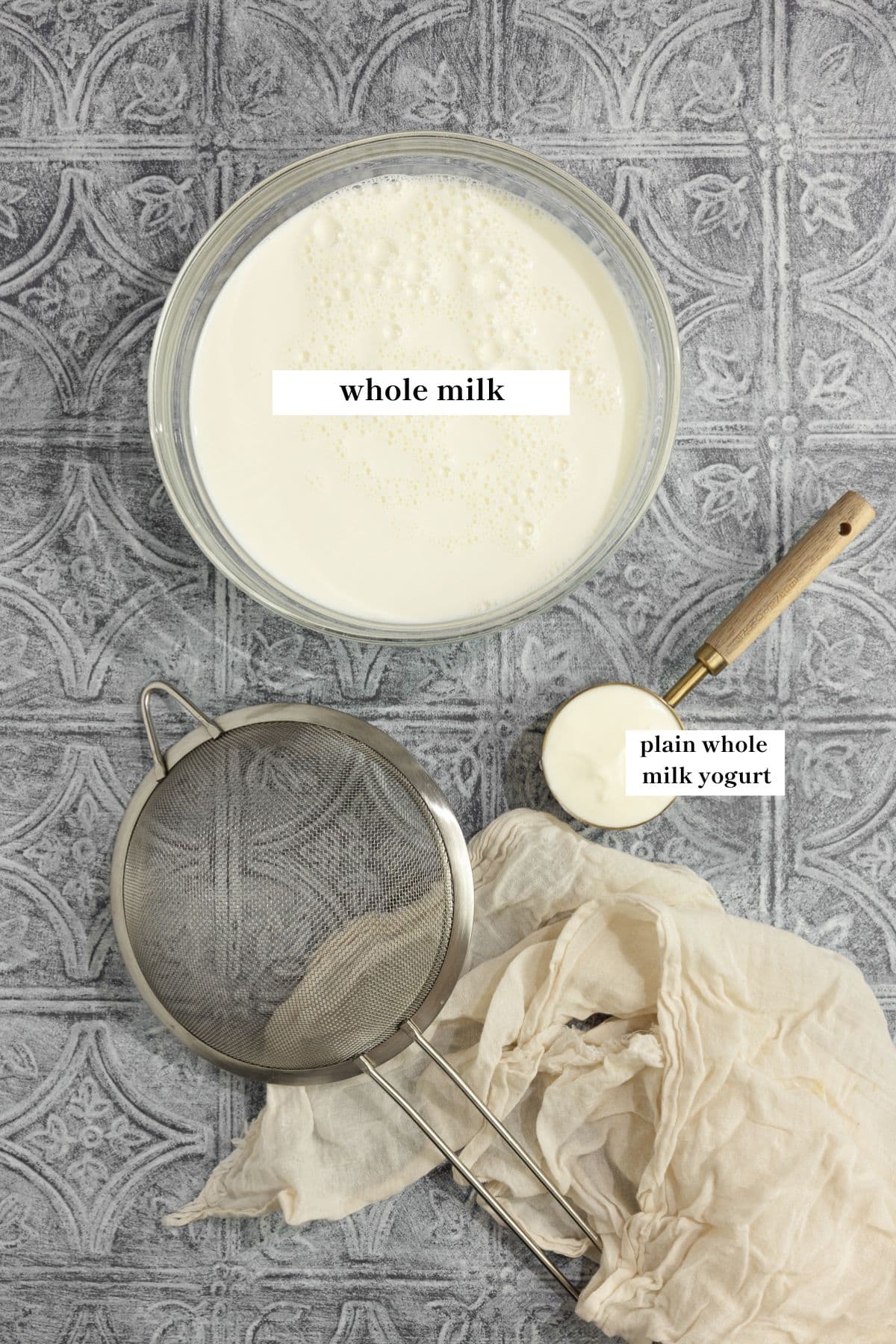
1⁄2 gallon whole milk – I recommend full-fat whole milk for the creamiest, richest consistency.
1⁄3 cup plain whole milk yogurt – Be sure that your yogurt contains live, active cultures in the ingredients.
A full ingredient list with exact amounts can be found in the recipe card below.
Tools You May Need
Thermometer
Fine mesh strainer
Cheesecloth or tea towel
How to Make Greek Yogurt
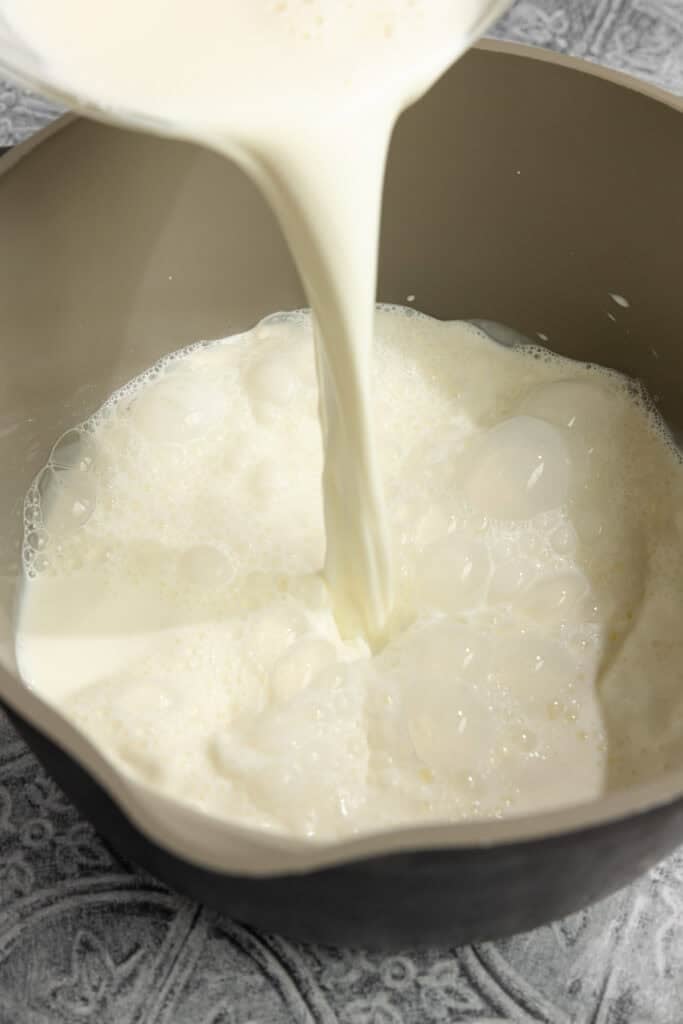
Step 1: Add the eight cups of milk to a large pot with a lid over medium-low heat. Bring the temperature of the milk to 180 degrees Fahrenheit, stirring every few minutes to keep the bottom from scalding. This process might take about 20-25 minutes. Once to temperature, remove from the heat. Let the milk cool to 110 degrees Fahrenheit. This may take 30-45 minutes. Continue to stir it occasionally and check the temperature. To speed this up, position the pot into a cold water bath.
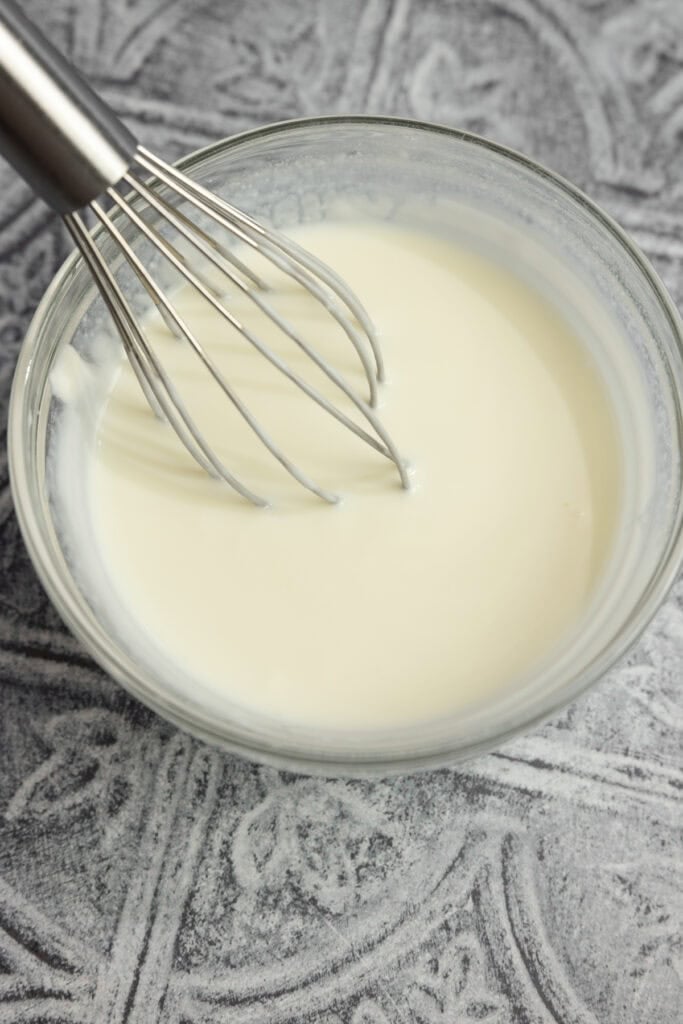
Step 2: In a small separate bowl, add the 1/3 cup of yogurt and one cup of the warm milk. Stir to combine.
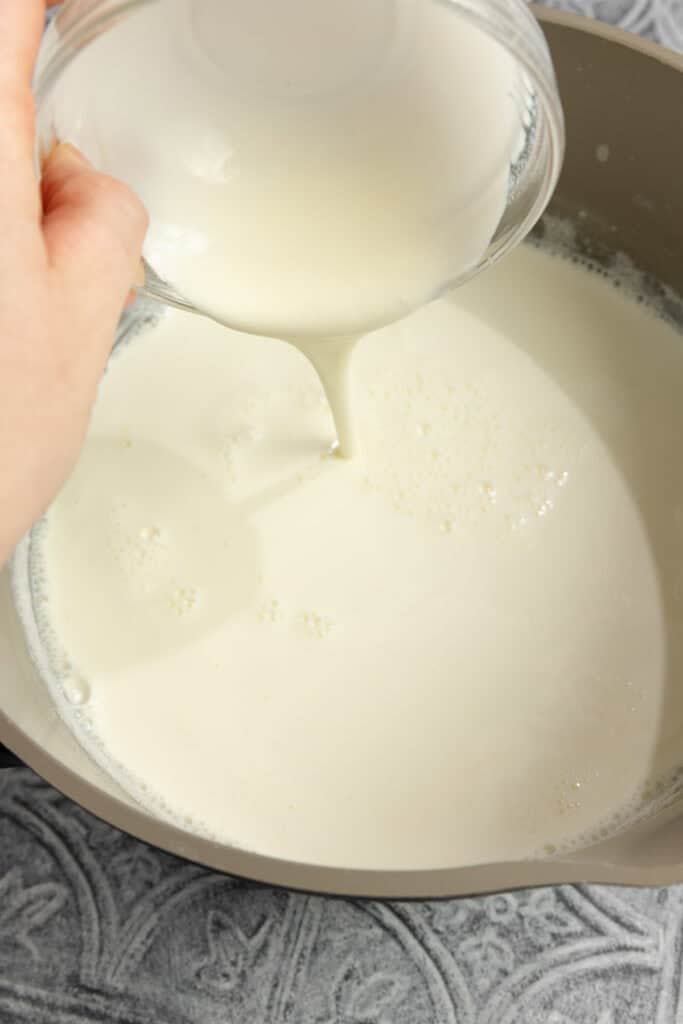
Step 3: Pour the yogurt mixture into the rest of the warm milk and stir.
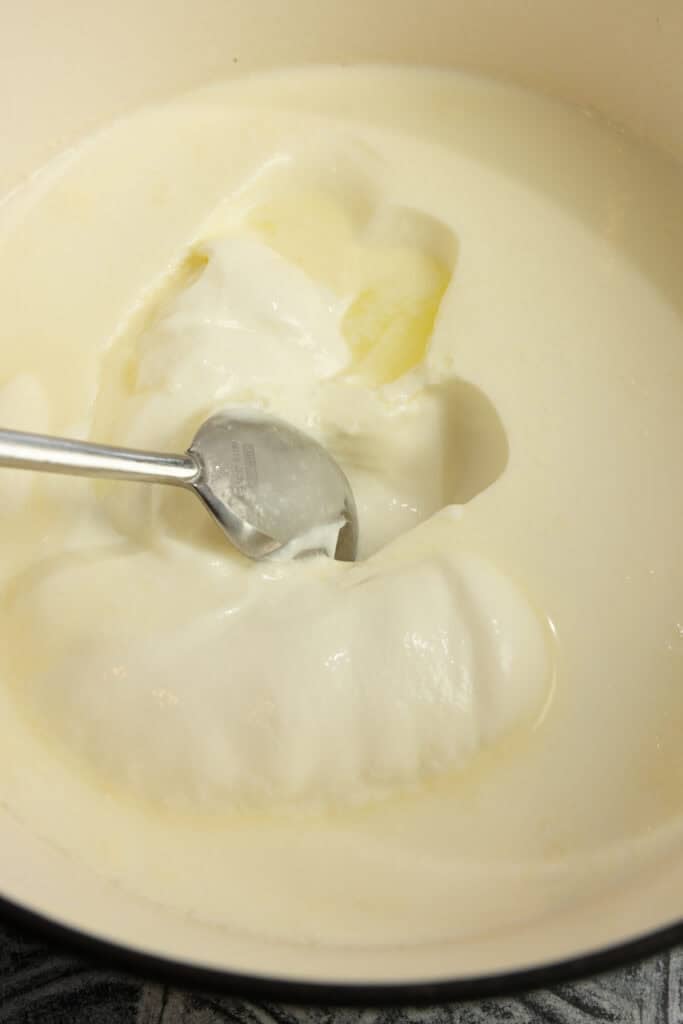
Step 4: Cover the pot with a lid and place it into the oven with only the oven light turned on. Let the yogurt sit for 24 hours undisturbed. Once the 24 hours have passed, remove the pot from the oven. At this point, you will have a whole pot of thick plain yogurt.
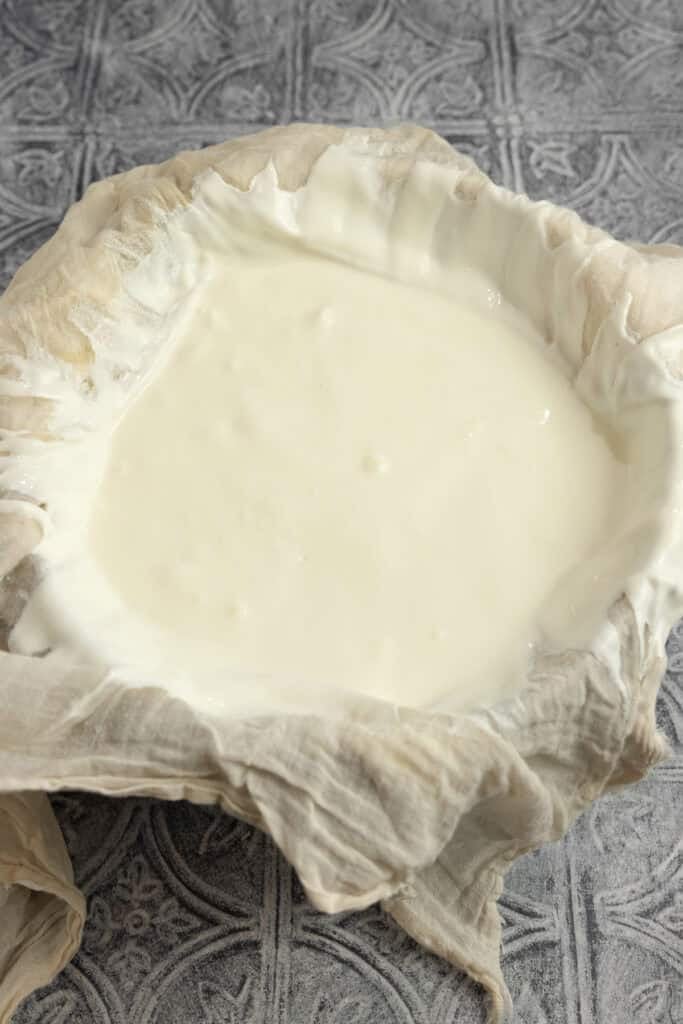
Step 5: Place a fine mesh strainer over a large bowl (to catch the whey), then line the strainer with cheesecloth or a clean tea towel. Pour the yogurt into the lined strainer, cover with plastic wrap or another towel to keep out contaminants, and place into the fridge. Strain for at least 10 hours. The longer you let the yogurt strain, the thicker the Greek yogurt will become.
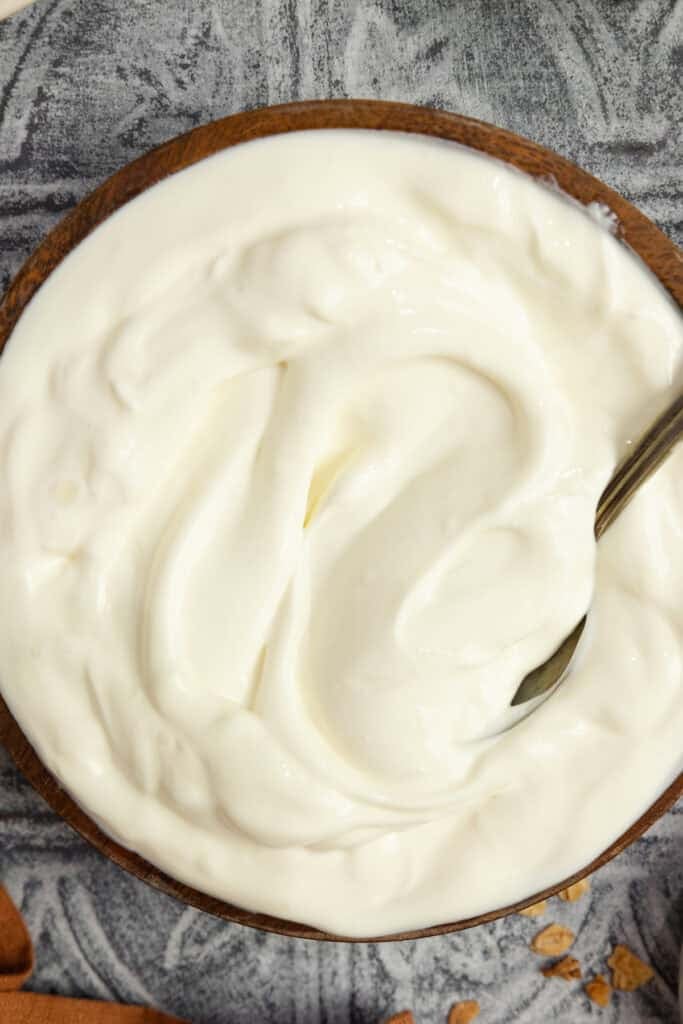
Step 6: Once the desired consistency is reached, serve and enjoy!
Tips
- Store yogurt in an airtight container in the refrigerator for up to two weeks.
- You might keep a note on your oven as a reminder that yogurt is inside. It can be easy to forget the yogurt inside and start to preheat the oven for something else.
- The 24 hours in the oven could be reduced, but the full time gives a stronger, tangy yogurt taste.
- Don’t forget to put aside a little bit of yogurt as the yogurt starter for your next batch! Your cultures may weaken after a few batches, so just start fresh with another small amount of store-bought yogurt.
- I tend to keep my Greek yogurt plain, but if you’d like to add sweetener to yours, add it in when you are stirring in your tempered yogurt starter. You can use maple syrup, honey, condensed milk, or regular sugar so long as you stir it gently to dissolve it.
- Keep the leftover whey for use in other recipes! You can add it to this no-knead sourdough bread, berry kefir smoothies, fermented lemonade, or in soups like this easy Zuppa Toscana for added flavor.
Recipe FAQs
I recommend whole milk for the best results. It will yield the thickest and creamiest result.
Greek yogurt has had the whey strained out for a thicker, richer texture, yielding more protein per serving. Regular yogurt is a little thinner as it contains all the whey.
Yes! Quality Greek yogurt at the grocery store is pricey and doesn’t go very far. For the price of the milk, you can make a much larger quantity of your own yogurt at home.
Heating the milk to the recommended temperature denatures the proteins in the milk. Changing the structure of the proteins in this way allows the yogurt to thicken. This process also kills any harmful bacteria that may be present.
Once strained, one gallon of milk will yield approximately 1/3 gallon of Greek yogurt.
More Breakfast Recipes from the Farmhouse
- Easy Sourdough Crumpets
- Quick Sourdough Discard Pancakes
- Sourdough Scones
- Sourdough Banana Muffins
- Ham and Cheese Frittata
If you try this recipe and love it, I would love it if you could come back and give it 5 stars! Tag me on Instagram @farmhouseonboone.
Greek Yogurt

Ingredients
- 1/2 gallon whole milk
- 1/3 cup plain whole milk yogurt
Instructions
- Add the 1/2 gallon of milk to a large pot with a lid over medium-low heat. Bring the temperature of the milk to 180 degrees Fahrenheit, stirring every few minutes to keep the bottom from scalding. This process might take about 20-25 minutes. Once to temperature, remove from the heat.
- Let the milk cool to 110 degrees Fahrenheit. This may take 30-45 minutes. Continue to stir it occasionally and check the temperature. To speed this up, position the pot into a cold water bath.
- In a small separate bowl, add the 1/3 cup of yogurt and one cup of the warm milk. Stir to combine.
- Pour the yogurt mixture into the rest of the warm milk and stir.
- Cover the pot with a lid and place it into the oven with only the light turned on. Let the yogurt sit for 24 hours undisturbed.
- Once the 24 hours have passed, remove the pot from the oven. At this point, you will have a whole pot of thick plain yogurt.
- Place a fine mesh strainer over a large bowl (to catch the whey), then line the strainer with cheesecloth or a clean tea towel. Pour the yogurt into the lined strainer, cover with plastic wrap or another towel to keep out contaminants, and place into the fridge. Strain for at least 10 hours. The longer you let the yogurt strain, the thicker the Greek yogurt will become.
- Once the desired consistency is reached, enjoy as desired!
Notes
- Store yogurt in an airtight container in the refrigerator for up to two weeks.
- You might keep a note on your oven as a reminder that yogurt is inside. It can be easy to forget the yogurt inside and start to preheat the oven for something else.
- The 24 hours in the oven could be reduced, but the full time gives a stronger, tangy yogurt taste.
- Don’t forget to put aside a little bit of yogurt as the yogurt starter for your next batch! Your cultures may weaken after a few batches, so just start fresh with another small amount of store-bought yogurt.
- I tend to keep my Greek yogurt plain, but if you’d like to add sweetener to yours, add it in when you are stirring in your tempered yogurt starter. You can use maple syrup, honey, condensed milk, or regular sugar so long as you stir it gently to dissolve it.
- Keep the leftover whey for use in other recipes! You can add it to this no-knead sourdough bread, berry kefir smoothies, fermented lemonade, or in soups like this easy Zuppa Toscana for added flavor.
Nutrition
Nutrition information is automatically calculated, so should only be used as an approximation.

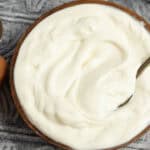

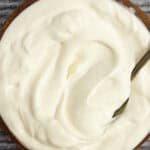











Can you use the instant pot for this recipe?
Yes.